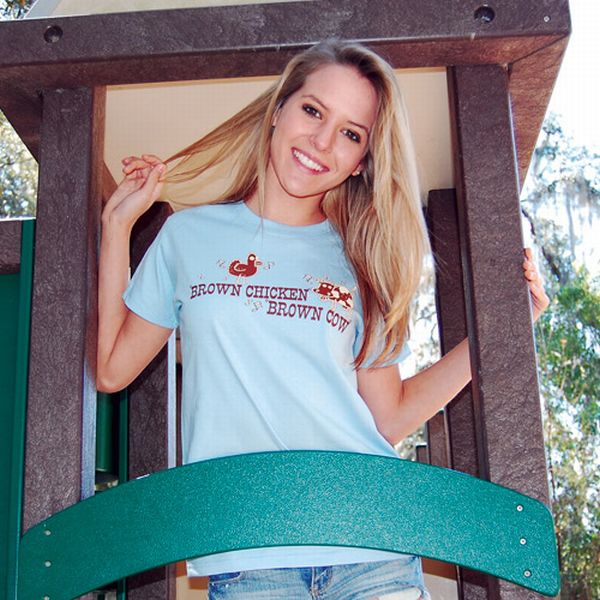|
|
Girl With A Funny T-shirt
|
In the 1960s, the ringer T-shirt appeared and became a staple fashion for youth and rock-n-rollers. The decade also saw the emergence of tie-dyeing and screen-printing on the basic T-shirt. In the late 1960s Richard Ellman, Robert Tree, Bill Kelly, and Stanley Mouse set up the Monster Company in Mill Valley, California, to produce fine art designs expressly for T-shirts. Monster T-shirts often feature emblems and motifs associated with the Grateful Dead and marijuana culture. Additionally, one of the most popular symbols to emerge out of the political turmoil of 1960s were T-shirts bearing the face of Marxist revolutionary Che Guevara.
The most common form of commercial T-shirt decoration is screen-printing. In screen-printing, a design is separated into individual colors. Plastisol or water based inks are applied to the shirt through mesh screens which limits the areas where ink is deposited. In most commercial T-shirt printing, the specific colors in the design are used. To achieve a wider color spectrum with a limited number of colors, process printing (using only cyan, magenta, yellow and black ink) or simulated process (using only white, black, red, green, blue, and gold ink) is effective. Process printing is best suited for light colored shirts. Simulated process is best suited for dark colored shirts. Very few companies continue to use water-based inks on their shirts. The majority of other companies that create shirts prefer to use plastisol due to the ability to print on varying colors without the need for color adjustment at the art level.
Specialty inks trend in and out of fashion and include shimmer, puff, discharge, and chino based inks. A metallic foil can be heat pressed and stamped onto any plastisol ink. When combined with shimmer ink, metallics give a mirror like effect wherever the previously screened plastisol ink was applied. Specialty inks are more expensive to purchase as well as screen and tend to appear on garments in boutiques.
Other methods of decoration used on T-shirts include airbrush, applique, embroidery, impressing or embossing, and the ironing on of either flock lettering, heat transfers, or dye-sublimation transfers. Laser printers are capable of printing on plain paper using a special toner containing sublimation dyes which can then be permanently heat-transferred to T-shirts.
|
|









